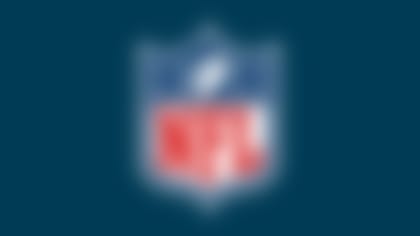NFL franchises use contextualized data to create competitive advantages. In order to realize an edge, teams need to employ the right data in the right way at the right time. This means distilling, interpreting and applying only the most influential data in a framework that accounts for their personnel, their opponents and their evolving game situations. My goal is to be *your analytics department. Each week this season, I want to work for you by giving you a peek into which numbers flag in my models as the most impactful ... or the most misunderstood.*
As always, let me know if your eye test is picking up on something interesting, or if there's a stat/trend you'd like me to take a deeper look at. You can hit me on Twitter @cfrelund. As with any great analytics department, the more collaborative this is, the more value we can create.
Now, let's dig into the relevant data heading into Week 6 of the 2019 NFL season:
SLEEPER TEAM
Detroit Lions: Despite taking the field without Pro Bowl cornerback Darius Slay and losing stout safety Quandre Diggs in the second quarter, the Lions nearly knocked off the high-flying Chiefs in Week 4, holding reigning MVP Patrick Mahomes without a single completion of 20-plus air yards in a game for the first time in his professional career, per Next Gen Stats. That's an impressive feat, even in a losing effort. And this kind of play bodes well for the 2-1-1 Lions' big "Monday Night Football" showdown with the division rival Packers (4-1) in Lambeau Field. Speaking of attempts of 20-plus air yards, Matthew Stafford has already connected on such passes 11 times in just four games. Last season, he had a total of 19 over the full season. Unsurprisingly, Stafford's air-yards-per-attempt average has gone from 7.0 in 2018 (ranking 31st among qualifying QBs) to 11.1 (first) this season, per NGS.
The Lions win this enticing NFC North bout if two things happen:
1) Detroit's run concepts and O-line keep Stafford free from Green Bay's pressure long enough for him to get vertical.
2) Detroit's defense, which boasts the lowest completion-percentage allowed on third down (44.4 percent), limits big plays (runs of 10-plus yards and passes of 20-plus), especially early in the game.
TWO SLEEPER PLAYERS
Deebo Samuel, WR, San Francisco 49ers: The rookie had a stat line of just one reception on three targets for a grand total of 3 yards in San Francisco's bludgeoning of the Browns on Monday, which is perfect for this primer, because his production seems a little sleepy right now. But remember: The Niners' highly efficient run game and 4-to-0 turnover differential meant they didn't need to show us much of their playbook, especially in the passing game. In his first four NFL games, Samuel has earned 109 of his 150 receiving yards after the catch. His average of 9.1 yards after the catch per reception ranks third among wide receivers who have at least 10 grabs. With versatile fullback Kyle Juszczyk (MCL sprain) out 4-6 weeks, Samuel's ability to create off of passes designed to help his QB avoid pressure will be even more impactful.
Carlos Hyde, RB, Houston Texans: Pro Football Focus credits the Texans back with forcing 13 missed tackles on rushes this season, tied for 14th-most in the NFL. Houston's O-line has improved over the first quarter of the season, but scheme and efficient first-down rushing (5.13 yards per attempt, ranking eighth) have been big drivers of success. Hyde has shown great ability to create on the ground this season, earning a first down on 28.8 percent of rushing attempts (the seventh-highest rate among qualified running backs). He's also been efficient in the red zone and stout in pass protection. That last positive isn't as sexy as the previous two when it comes to fantasy points, but it's a huge factor when it comes to win share.
TREND TO BELIEVE
Defensive pressure differential has a strong relationship to wins.
Nothing about football is absolute, but one of the more predictive aspects of the game -- something that checks out mathematically -- is that creating more efficient defensive pressure than your opponent translates to more wins. This seems simple, but that's the point. One of the biggest reasons why analytics are a useful tool: They allow us to quantify the things we see and know, so we can create parameters for high- or low-probability outcomes.
In my 10-season sample, teams with a defense that forced at least a 28.5 percent disruption rate won nearly 65 percent of games (64.8). Through five weeks of 2019, defenses forcing pressure on at least 30 percent of dropbacks are 36-19 (a 64.5 percent winning rate), per Next Gen Stats. Over the past 10 seasons, the average disruption rate for teams that won was almost five percentage points higher than those that lost: 28.1 percent, compared to 23.2 percent. So far this season, NGS tracks the average pressure rate forced for winning teams at 29.4 percent, compared to 24 percent for losing teams. Five percentage points is a key number, as my decade-long model shows that teams which generate at least that much more disruption than the opponent won nearly 69 percent of games (68.9). Next Gen Stats show that this season, such teams are 39-17 (a 69.6 percent winning percentage).
Long story short: We have something to dig into here.
Using models to prove mathematical correlation creates a structure to help interpret past causation -- and then provide predictive strategy here. For example, looking at informative factors like score, location on the field and down-and-distance over the 10-season model shows that pressure on third down which results in a fourth-and-5-plus is roughly worth 1.7 points. If you break this down by field position, it becomes more granular; as in, the closer to the end zone, the more likely a field goal is to be attempted (and made). But also, there are certain distances where teams are less likely to attempt a fourth-down conversion or touchdown if time permits, which can be thought of as saving points/possessions. Individual teams can overlay their tendencies and opponents to game plan for specifics from these generalities.
For our purposes as outsiders, let's just put this in general terms: Teams that reach a disruption rate of at least 30 percent, while outstripping the opponent in this area by at least five percentage points, are likely to end up in the winner's circle.
This past Sunday saw two particular games that exemplified pressure's impact: the Raiders' upset of the Bears and the Niners' statement blowout of the Browns. According to Next Gen Stats, Oakland had a 41.2 percent pressure rate in that game, as compared to Chicago's miniscule 9.4 percent mark. Meanwhile, San Francisco outstripped Cleveland in this area, 35.7 to 12.9.
And it shouldn't surprise anyone that the Patriots -- the NFL's lone 5-0 team -- lead the NFL in disruption rate at 34 percent, per Next Gen Stats.
Speaking of the fine work by the folks over at Next Gen Stats, an awesome member of our analytics team, Keegan Abdoo, made a great graph with NGS data that provides a nice visual of the relationship between defensive pressure rate and score differential since 2017:
TREND TO BE WARY OF
The growing perception that play-action's ALWAYS a magic bullet.
My inspiration for this focus stems from all the scrutiny Dak Prescott and the Cowboys' offense have received in the wake of two straight losses. According to Pro Football Focus' data, one of the main culprits is Prescott's recent struggles in play-action passing. The fourth-year quarterback flourished off play-action during the 3-0 start to the season (SEE: 81.1 percent completions, 11.1 yards per attempt, 4:1 TD-to-INT ratio, 137.5 passer rating), but his numbers have plummeted over the past two weeks (66.7, 8.2, 0:2, 52.2). This is a meaty topic, though, and it's far more interesting when viewed through a league-wide lens.
I understand why play-action is consistently viewed as a general solution to all offensive problems. According to Pro Football Focus, the five best-performing teams on play-action are the Seahawks (152.6 passer rating), Buccaneers (145.6), Jaguars (144.6), Titans (138.2), Giants (122.7) and Ravens (122), with this quintet combining for a sparkling 27:1 TD-to-INT ratio. These figures are indeed spectacular. But a surface-level view is too simplistic here.
Here's where things get tricky. In addition to the usual informative metrics (personnel, down-and-distance, area of the field, score, etc.), a really statistically influential factor in play-action success is the relationship to the run game. Not necessarily being highly efficient on the ground, but what kind of rushes were attempted and in which personnel. First-down play calls are very predictive for many teams -- e.g., inside vs. outside rushes, which can be gleaned from pre-snap alignment. Personnel is more predictive for some teams -- for example, when fullback James Develin is on the field for the Patriots, it's a strong run indicator. An important aspect here is that, for play-action to be most effective, opposing defenses have to not be able to immediately diagnose the pass. (Or maybe it's more fair to say defenses have to not be able to stop the pass in time, once they recognize it.)
One overall note: Quarterbacks using play-action from under center, as opposed to those deploying the tactic from the shotgun, have earned more first downs and touchdowns -- and posted a higher yards-per-attempt average -- since the beginning of 2018.
My main point in this section? Using play-action can be effective, but when and how the tactic is incorporated matters a lot -- meaning it's not always the universal offensive panacea some people present it as.
Follow Cynthia Frelund on Twitter @cfrelund.




